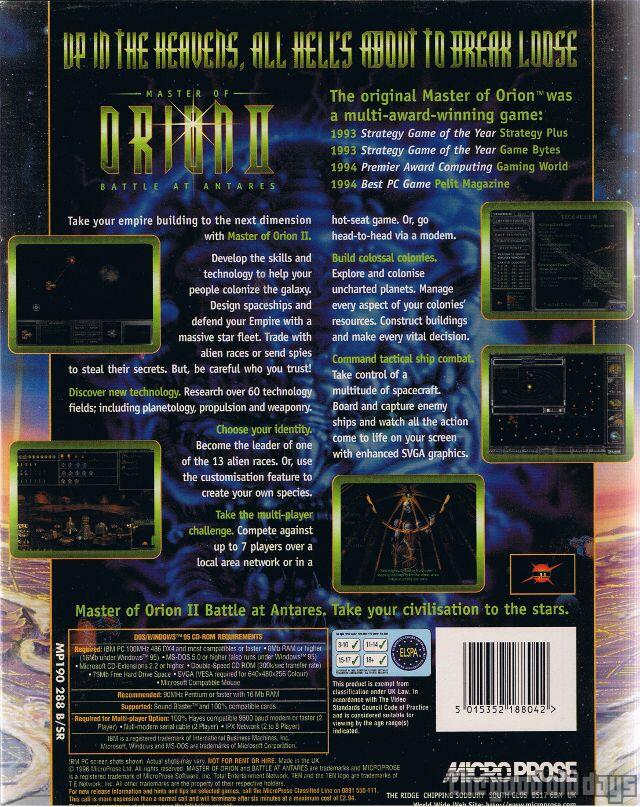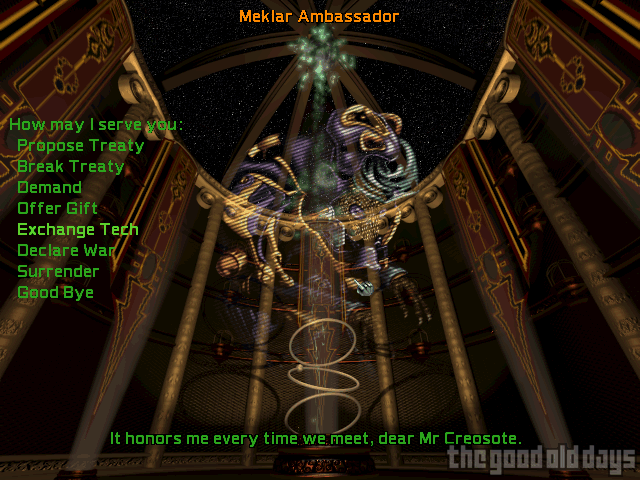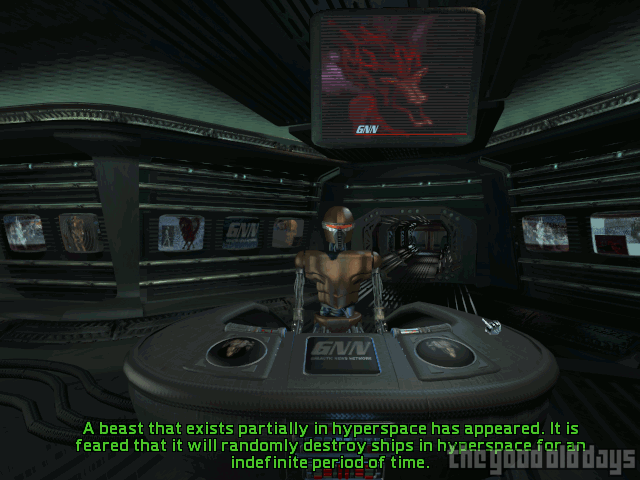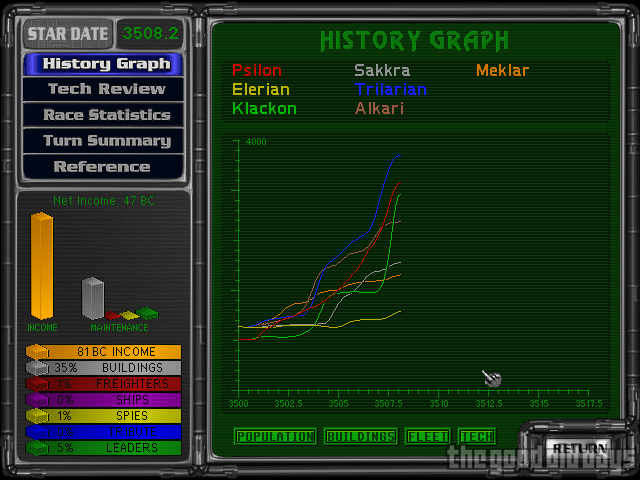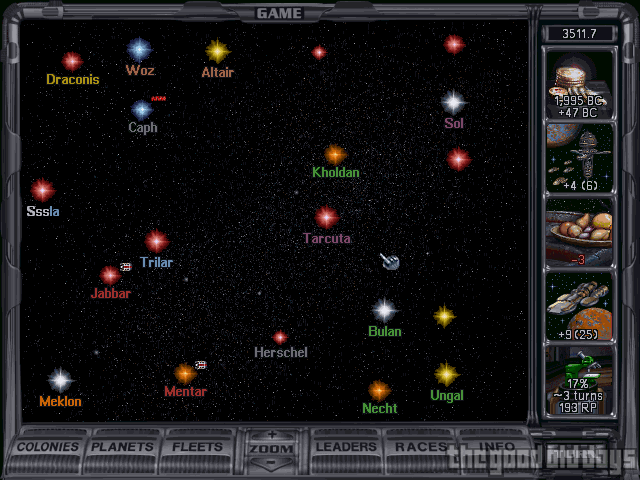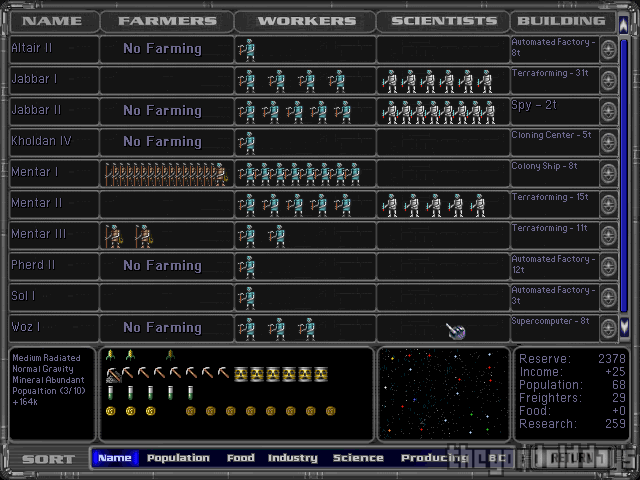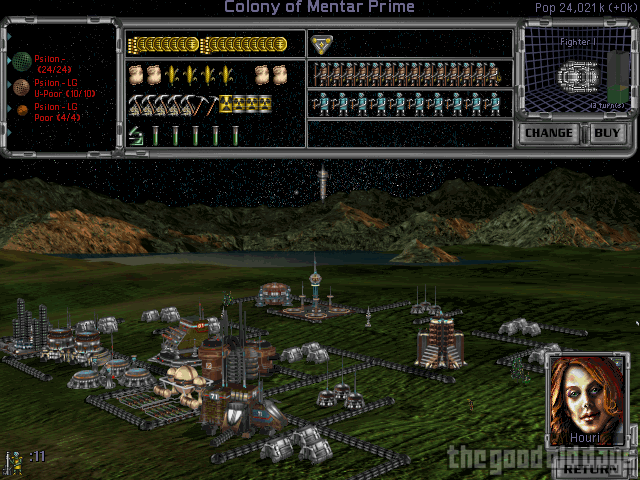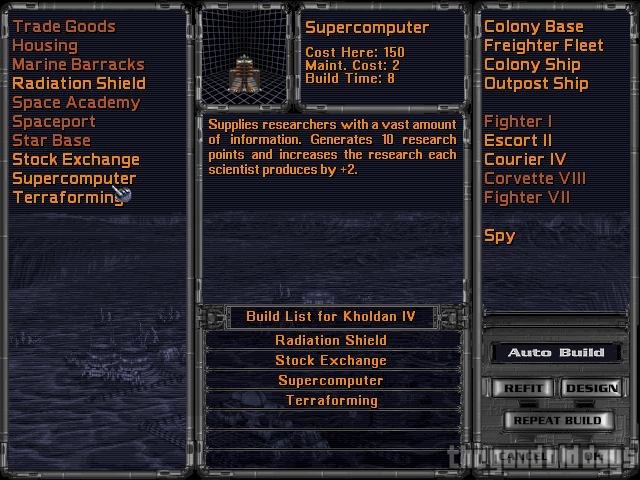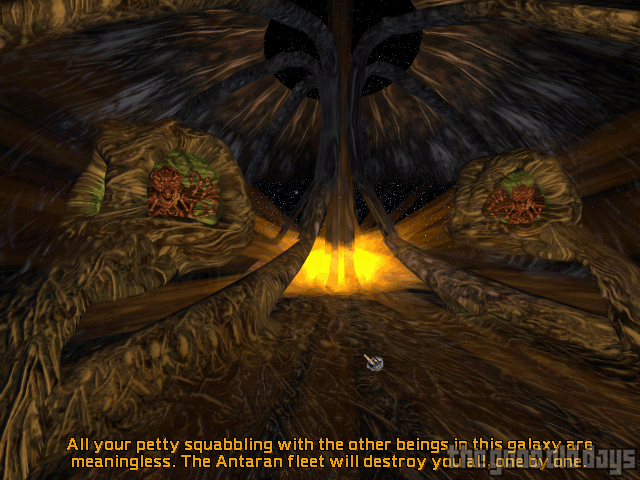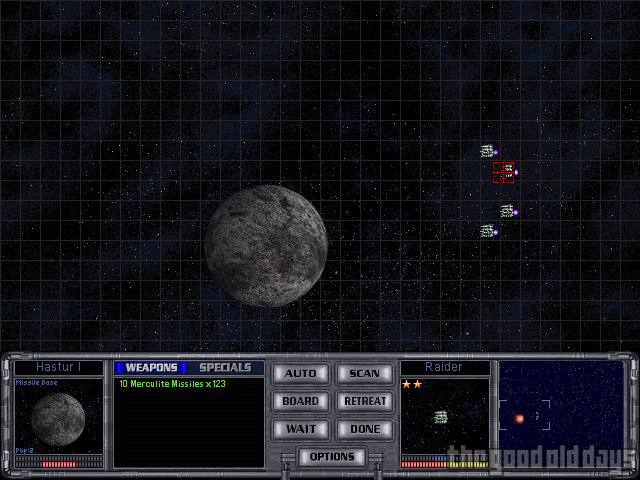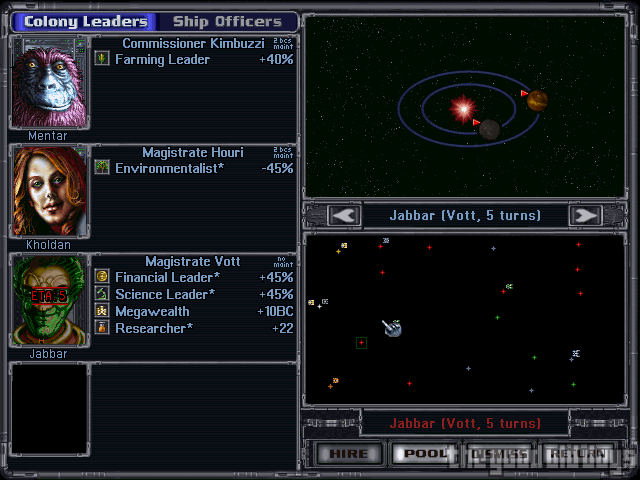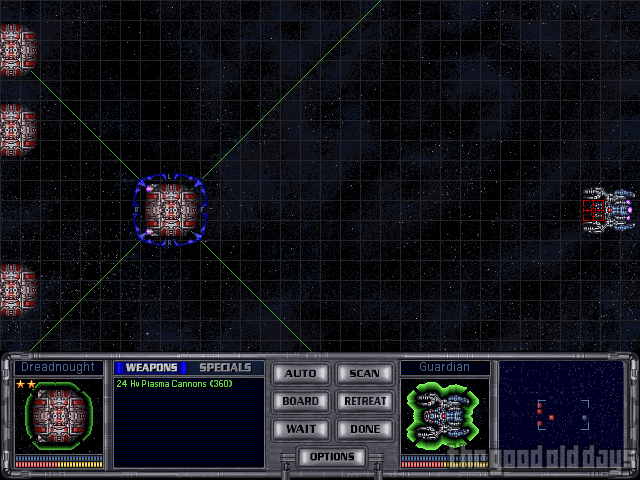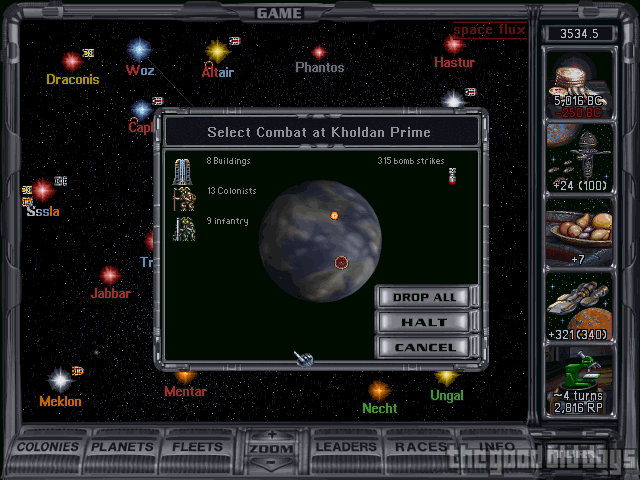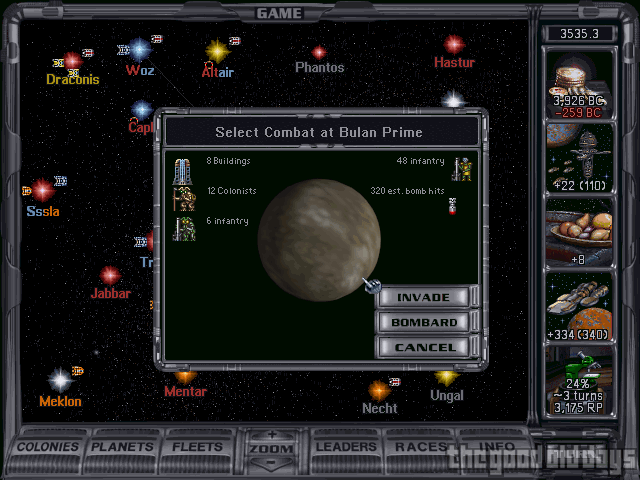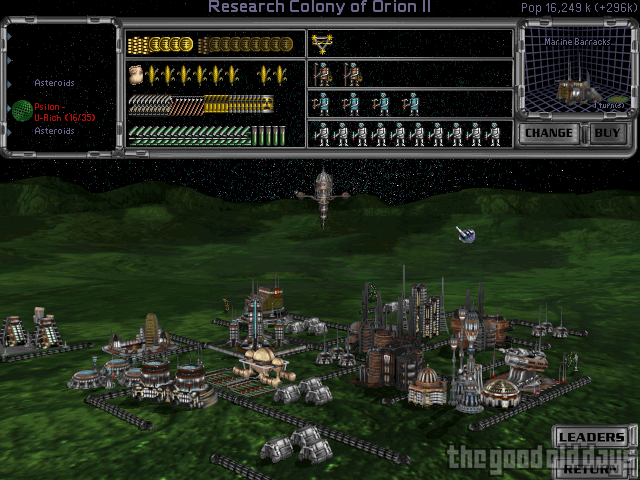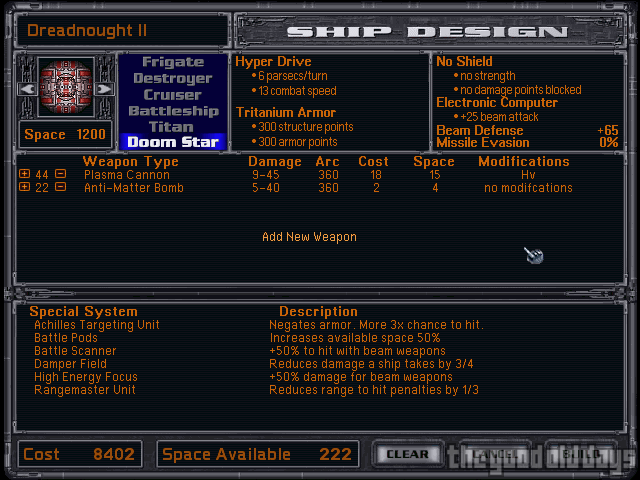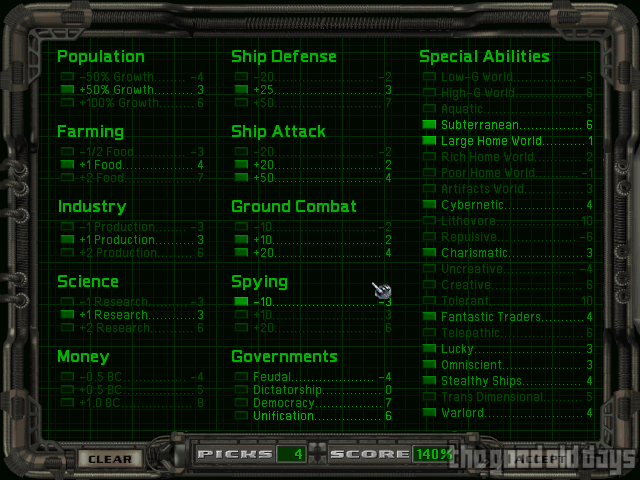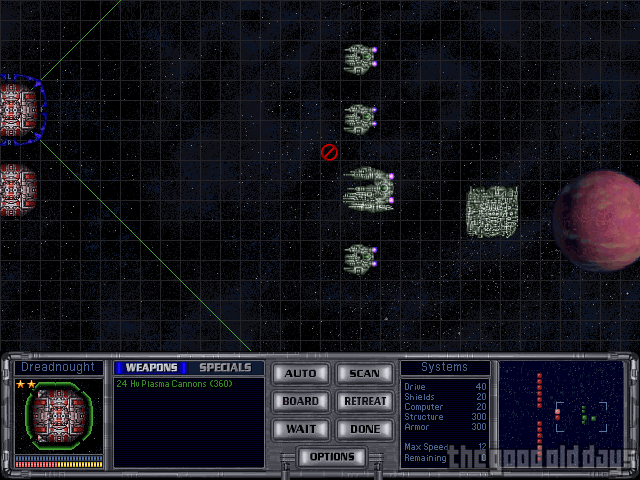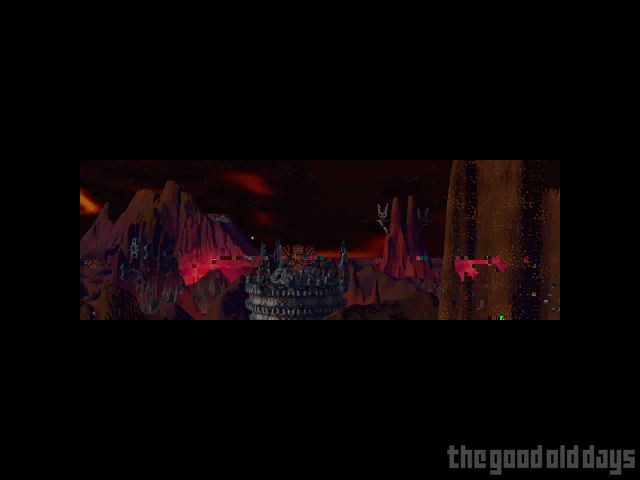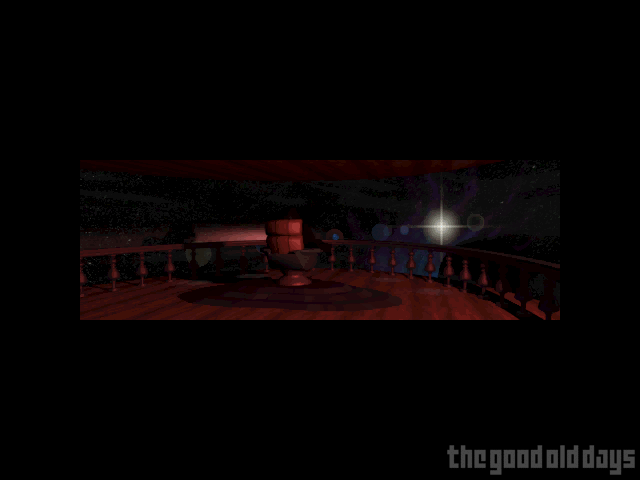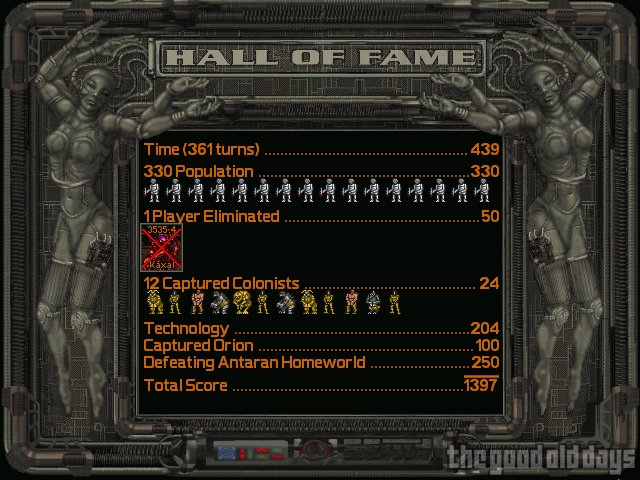Thoughts by Mr Creosote (24 00 2009) – PC (DOS)
Master of Orion… one of the best balanced strategy games ever made. Also one of the first to successfully simulate diplomatic relations (albeit with a limited set of moves). One of the very few games in the explore and expand genre in which the bureaucracy of each turn (i.e. taking care of the basics) stays manageable. How can Battle at Antares possibly improve on that? There are two levels to that answer. The first one is how they tried improving it. The second one is what works and what doesn’t.
Again, there are eight races struggling for control of the whole galaxy. Starting out from their home world, they send their space ships to neighbouring planets and settle on them (if their current technology allows for survival on such a world). There, they build up industry and research facilities and build more ships which are then sent to even more planets and so on.
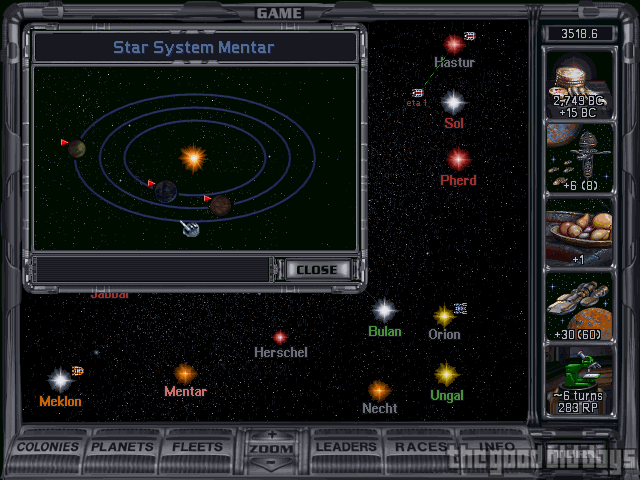
The first noticable new feature is that each solar system can now consist of more than one habitable planet. This adds a new layer to the strategic level: to settle planets in the same solar system, you don’t need ships with huge propulsive power, i.e. cheaper ones are enough. A solar system can belong to more than one race this way, and in war, space ships can blockade enemy planets in the system while protecting their own.
Concerning the planets themselves, the formerly abstract categories of investment (industry, research and so on) have been replaced by regular buildings like in Civilization. So, for example, instead of putting production potential into ‘industry’, you build a robot facilty and then an automated waste processor. Instead of putting money into ‘defense’, you build a missile base or a ground battery of lasers.

This is, unfortunately, a change for the worse. While the idea of building specific structures might work on city level (in Civilization), it is simply silly on planetary level (one factory for a whole planet?). Of course, especially in the later game, it leads to lots and lots of time being spent on managing production chains which are always the same – there’s virtually no decisions involved, it’s just tedious. Production queues are supposed to help, but it really only hides the inherent problem to a degree. The most subtle, but in effect worst effect of this is that a planet can now only commit to one production job at a time – in the predecessor, you could built factories, missile bases and ships all at the same time. Again, that made a lot more sense, because we’re talking about planetary level. Why should a whole planet only be able to build one thing at a time?
Regarding research, the game offers a very good approach. Technologies are collected in groups of about three, and the regular way, it’s only possible to research one of each group. While completely unrealistic, this is a clever way to encourage trading of technologies on diplomatic level.
The diplomacy, on the other hand, which is one of the strongest points of the predecessor, has been severely screwed up. Technically, there are useful new options, like for example ceding / demanding solar systems. In practice, most of the options are useless, though. First of all, there are so-called ‘repulsive’ races which basically don’t take part in any diplomatic action at all. Second, the AI reacts to the player’s offers in very strange ways: You have a military alliance with another race and the sympathy meter shows full harmony (the best possible value); you’re attacked by a third race, so you go to your ally to ask him to declare war on the aggressor, too. What happens? Your ally not only dishonours your alliance, but he declares war on you for suggesting such a thing! Sympathy jumps from +100 (harmony) to -100 (hate) within a second and the former ally, which you expected to watch your back, is now attacking you from behind. Great. After this has happened to you ten times, you’ll most likely just stay away from attempting any serious diplomacy – which can’t be what the developers intended.
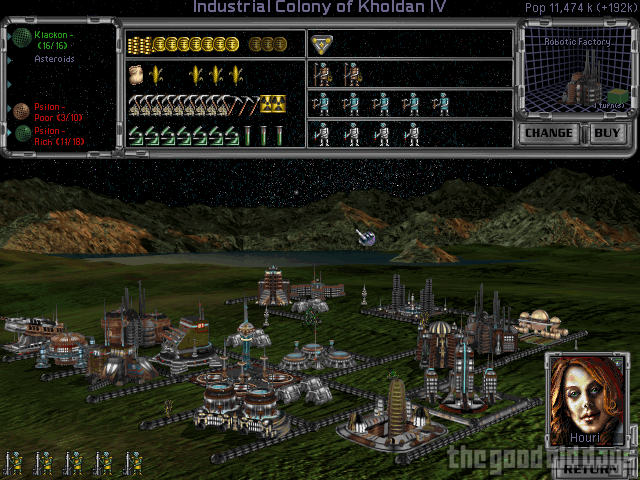
There are many more smaller changes in the game. To name just a few more: The ship designer has a few less (!) options, there are ship and planetary leaders (very roughly comparable to the heroes of Master of Magic), space battles have increased their tactical complexity slightly, races can be individualized with many different abilities (again, like the wizard creator in Master of Magic) and there is a very good multiplayer mode (everybody gives their orders at the same time and then they’re all committed at once at the end of the turn).
Most of these changes are for the better. However, the virtual destruction of the diplomacy and the extremely fussy building system have such a high impact (because they’re two of the central functions of the game) that Battle at Antares is less fun than its predecessor. In spite of all the good new things, the balance is gone.

